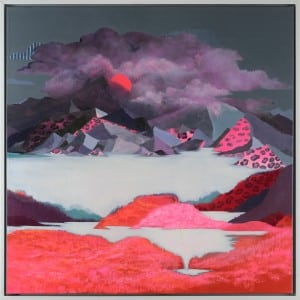
The Group of Seven: Shaping Modern Canadian Art

The Group of Seven, a collective of Canadian landscape painters active from 1920 to 1933, left an indelible mark on the art world. Known for their vivid and emotive depictions of the Canadian wilderness, the Group laid the foundation for a distinctly Canadian national art movement. While their legacy is rooted in early 20th-century landscapes, their influence continues to resonate in contemporary art practices today.
A New Vision of Canadian Art

The Group of Seven—Franklin Carmichael, Lawren Harris, A.Y. Jackson, Frank Johnston, Arthur Lismer, J.E.H. MacDonald, and Frederick Varley—revolutionized Canadian art by shifting its focus toward the natural environment. Inspired by regions like Algonquin Park, Georgian Bay, and the Arctic, they sought to capture the spirit of the Canadian wilderness through bold colors, innovative compositions, and a shared belief in the transformative power of nature.
Tom Thomson, often considered a precursor to the group, played a pivotal role in shaping their vision despite his untimely death in 1917. His works, such as *The Jack Pine* and *The West Wind,* are iconic representations of the rugged Canadian landscape and continue to inspire artists across generations.
Bridging Past and Present: The Group’s Contemporary Influence
Today’s contemporary Canadian artists often draw upon the aesthetic and conceptual frameworks established by the Group of Seven. Here’s how their legacy lives on:
1. **Celebration of the Landscape**

Many modern artists continue to explore the natural world as a central theme, albeit through a contemporary lens. Whether through abstraction, multimedia installations, or digital art, the Canadian landscape remains a powerful source of inspiration. For example, artists like Shawn Serfas intertwine environmental science and abstract landscapes, echoing the Group’s exploration of nature while addressing current ecological concerns.
2. **Experimentation with Form and Color**

The Group’s daring use of color and form set a precedent for pushing artistic boundaries. This approach is evident in the works of contemporary painters who use vibrant palettes and unconventional techniques to evoke emotion and narrative, transcending literal depictions of the environment.
3. **A National Identity**
The Group’s ambition to create a distinctly Canadian art movement laid the groundwork for artists to explore and assert Canadian identity through art. Today, contemporary creators build on this legacy by incorporating diverse perspectives, including Indigenous voices, to reimagine what it means to depict Canada’s land and culture.
4. **Critique and Conversation**
While celebrated for their achievements, the Group has also been critiqued for presenting the Canadian wilderness as untouched, ignoring Indigenous presence and histories. Contemporary artists often engage in dialogues about these omissions, creating works that challenge colonial narratives and honor the longstanding relationship between Indigenous peoples and the land.
Beyond the Canvas: The Group’s Enduring Legacy
Institutions like the McMichael Canadian Art Collection and the National Gallery of Canada continue to showcase the Group’s work, ensuring their relevance to both historical and contemporary contexts. Meanwhile, modern exhibitions often juxtapose their landscapes with works by new artists, fostering conversations about tradition, innovation, and the evolving role of art in society.
The Group of Seven’s influence is a testament to the enduring power of their vision. By connecting art to the land, they shaped not only a national identity but also an artistic legacy that remains a vital part of Canada’s cultural fabric. For contemporary artists, their work serves as both inspiration and a call to redefine how we see and depict the world around us.
Final Reflections

As Canada’s art world evolves, the Group of Seven remains a cornerstone of its history and a catalyst for its future. Their pioneering spirit continues to inspire artists to explore, challenge, and expand the boundaries of creativity, proving that the landscapes they loved so deeply hold endless possibilities for artistic expression.
November 20, 2024